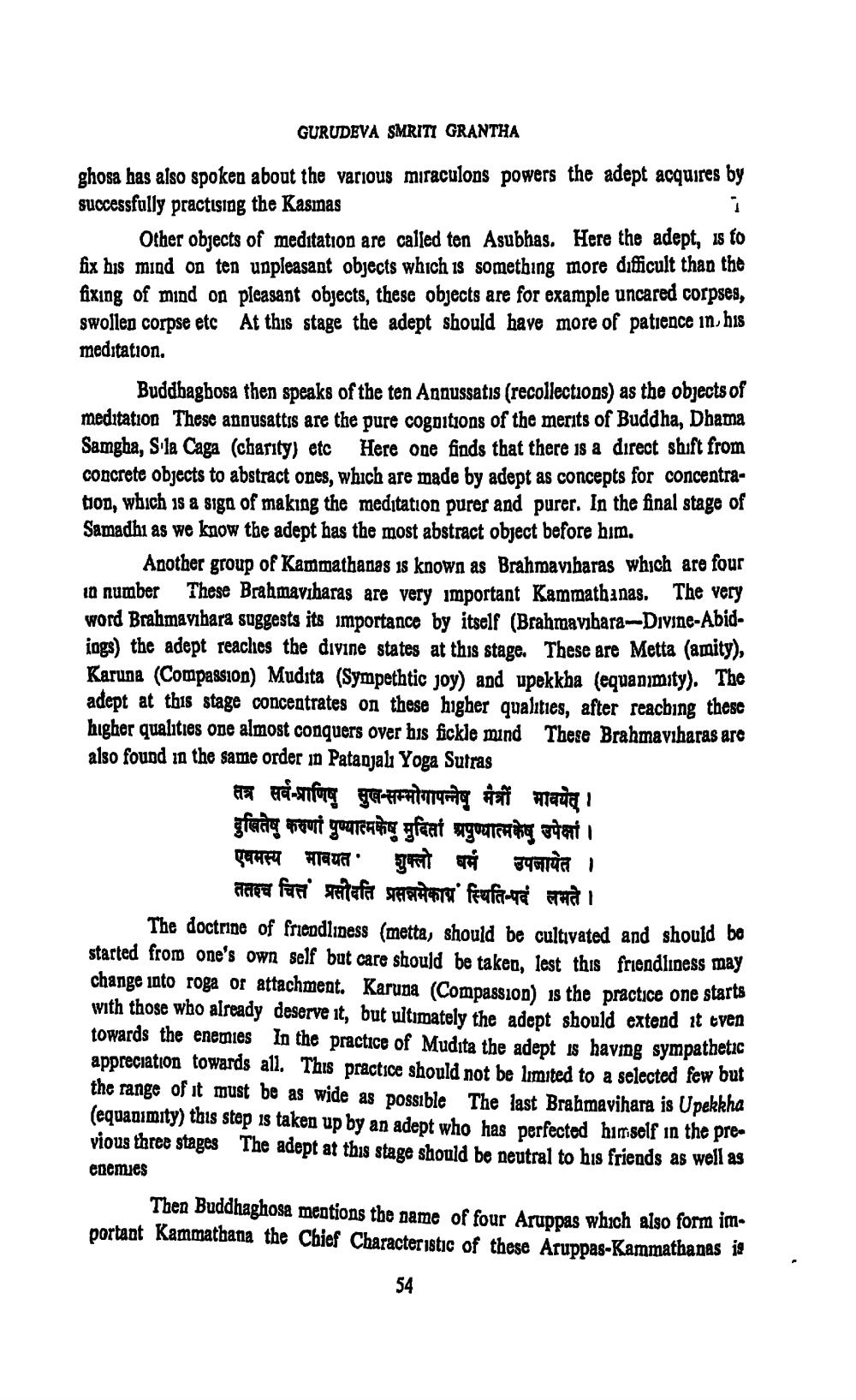________________
GURUDEVA SMRITI GRANTHA
ghosa has also spoken about the various miraculons powers the adept acquires by successfully practising the Kasınas
Other objects of meditation are called ten Asubhas. Here the adept, is to fix his mind on ten unpleasant objects which is something more difficult than the fixing of mind op pleasant objects, these objects are for example uncared corpses, swollen corpse etc At this stage the adept should have more of patience in his meditation.
Buddhagbosa then speaks of the ten Annussatis (recollections) as the objects of meditation These annusattrs are the pure cognitions of the merits of Buddha, Dhama Samgha, Sla Caga (charity) etc Here one finds that there is a direct shift from concrete objects to abstract ones, which are made by adept as concepts for concentration, which is a sign of making the meditation purer and purer. In the final stage of Samadhi as we know the adept has the most abstract object before him.
Another group of Kammathanas is known as Brahmavibaras which are four in number These Brahmavıharas are very important Kammathanas. The very word Brahmavibara suggests its importance by itself (Brahmavibara-Divine-Abidings) the adept reaches the divine states at this stage. These are Metta (amity), Karuna (Compassion) Mudita (Sympethtic joy) and upekkba (equanimity). The adept at this stage concentrates on these higher qualities, after reaching these higher qualities one almost conquers over bis fickle mind These Brahmaviharas arc also found in the same order in Patanjal Yoga Sutras
तत्र सर्व-प्राणिषु सुख-सम्मोगापन्नेषु मैत्री भावयेत् । दुखितेषु करणां पुण्यात्मकेषु मुदिता अपुण्यात्मकेषु उपेक्षां । एवमस्य भावयत · शुक्लो धर्म उपनायेत ।
ततश्च चित्तं प्रसीदति प्रसन्नमेकान स्थिति-पदं लभते । The doctrine of friendliness (metta, should be cultivated and should be started from one's own self but care should be taken, lest this friendliness may change into roga or attachment. Karuna (Compassion) is the practice one starts with those who already deserve it, but ultimately the adept should extend it even towards the enemies In the practice of Mudita the adept is having sympathetic appreciation towards all. This practice should not be limited to a selected few but the range of it must be as wide as possible The last Brahmavihara is Upekkha (equanimity) this step is taken up by an adept who has perfected himself in the previous three stages The adept at this stage should be neutral to his friends as well as enemies
Then Buddhaghosa mentions the name of four Aruppas which also form important Kammathana the Chief Characteristic of these Aruppas-Kammatbanas 19
54




